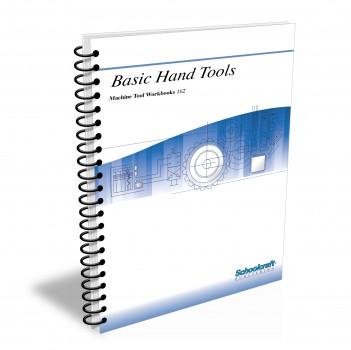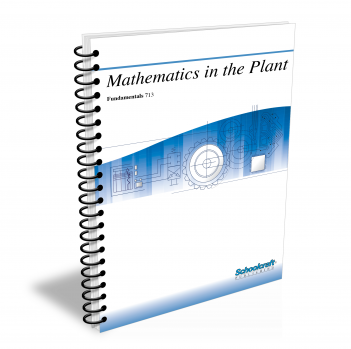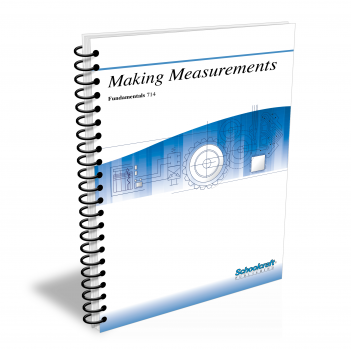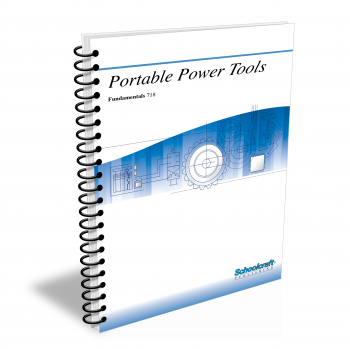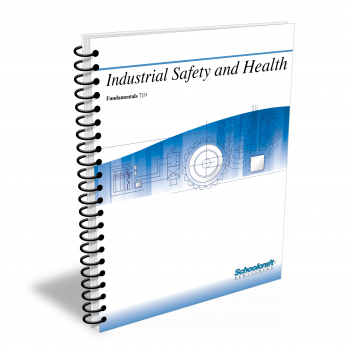Hand Tools
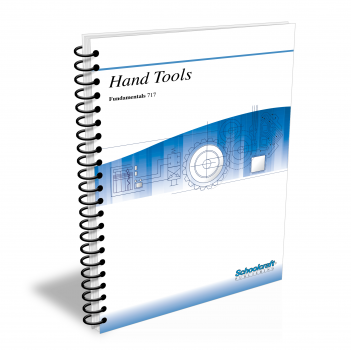
Course Number: 717
The Hand Tools textbook describes the most important hand tools used in industry. It begins with a chapter on measuring, including units of measurement, and follows with a lesson on the most common tools used in all trades-wrenches and screwdrivers. The following chapters describe the tools used in specific crafts. The textbook ends with a general description of hoisting and pulling tools, used in many crafts.
Does your curriculum require additional topics not included in this textbook? Build a customized version of the Hand Tools textbook below.
This textbook has been recently updated
to include topics lists, objectives, & key terms for every chapter.
Recommended Contact Hours – 15
Preview a Chapter
Available Supporting Material
- Table of Contents
- Exam Copies
- Suggested Titles
Table of Contents
Chapter 1: Measuring Tools
Topics: Linear and angular measurement; Rules and measuring tapes; Slide, vernier, and micrometer caliper; Squares
Learning Objectives:
- Explain how to hold a rigid rule correctly when measuring an object and show from which point the measurement begins.
- Describe how to set lock joint transfer-type calipers.
- Identify vernier calipers.
- Explain how to take a measurement with a micrometer caliper.
- Name the parts of a combination square.
Chapter 2: Wrenches and Screwdrivers
Topics: Wrenches-open-end, box-end, combination, socket, adjustable, torque; Screwdrivers-standard, cross-slot, spiral, ratchet, offset; Driving and removing screws; Restoring a blade
Learning Objectives:
- Identify types of materials used for making wrenches.
- Identify open-end, box-end, socket, socket-head, adjustable, torque, and striking-face wrenches.
- Describe two sizes that are important in identifying a socket wrench.
- Identify standard, Phillips, offset, and spiral-ratchet screwdrivers.
- List the steps to follow when driving a screw.
Chapter 3: Pipefitting Tools
Topics: Pipe wrenches; Vises; Cutting, reaming, threading, and tapping pipe; Cutting tubing and plastic pipe; Flaring tubing; Tool care
Learning Objectives:
- Identify a straight pipe wrench, a Stillson wrench, a chain pipe wrench, a strap wrench, and a compound-leverage wrench.
- Explain how to use a pipe wrench.
- Explain why a machinists' vise should not be used for holding pipe.
- Explain how to thread pipe.
- Explain how to clean a pipe tool.
- Explain how to cut and flare tubing.
Chapter 4: Plumbing Tools
Topics: Plumbing systems and codes; Joining pipe; Tube bending; Cutting and assembling pipe; Plungers; Augers; Sewer tapes; Special wrenches
Learning Objectives:
- Explain how to use a mechanical tube bender.
- List the steps in joining hubless pipe.
- Explain why the drain pipe should be completely covered by the force cup.
- Name the criteria used in selecting line clearing tools.
- List the steps in measuring pipe when using the center-to-center measuring systems.
Chapter 5: Electrician's Tools
Topics: EMT bender; Bending and assembling conduit; Knockout punches; Fish tapes; Pliers; Wire and cable strippers; Test and safety equipment
Learning Objectives:
- Explain how to use an EMT bender and a neon circuit tester.
- List the parts of a knockout punch.
- Name the uses of the all-purpose tool.
Chapter 6: Woodworking Tools
Topics: Planes; Scrapers; Drills and bits; Chisels; Levels; Plumb bobs; Hammers and nail sets
Learning Objectives:
- Describe the difference between a ripsaw and a crosscut saw.
- Explain the difference between a compass saw and a keyhole saw.
- Describe the different types of planes.
- Identify a Forstner bit.
- Explain the working of a plumb line.
Chapter 7: Masonry, Plastering, and Glazing Tools
Topics: Working with bricks, mortar, concrete; Tuckpointing; Edging and finishing; Repairing plaster and wallboard; Cutting and installing glass
Learning Objectives:
- Explain how to mix a small batch of mortar.
- List the uses of a trowel.
- Define tuckpointing.
- Explain why flat concrete surfaces must be screeded.
- Explain how to repair one of the following problems: (a) small plaster cracks, (b) shrinkage cracks, or (c) loose or bulging plaster.
- Explain how to replace a broken pane of glass in a window.
Chapter 8: Sheet Metalworking Tools
Topics: Gauges; Layout tools; Dividers; Punches; Nibblers; Riveting tools; Metal-cutting chisels; Hammers; Snips; Dressing tools; Bench stakes
Learning Objectives:
- Identify different types of snips and punches.
- Identify the bench stakes discussed in this Lesson.
- List six safety practices to follow when working with sheet metal.
- Describe different types of sheet metal.
Chapter 9: Metalworking Tools
Topics: Vises; Hacksaws; Files; Taps; Dies; Thread classes; Reamers
Learning Objectives:
- Select the proper hacksaw blades for cutting various materials.
- Explain the difference between single-cut and double-cut files.
- List the types of taps usually found in a tap set.
- Explain how to cut an external thread on a bolt, screw, or stud.
- Explain how to remove a reamer from a hole.
Chapter 10: Hoisting and Pulling Tools
Topics: Knots; Wire rope; Slings, sling angles, hitches; Sling spreader beams; Block and tackle; Chain fall; Pullers
Learning Objectives:
- Explain how to prevent synthetic and fiber rope from unraveling.
- Explain how individual wires and strands of wire are formed into wire rope.
- Identify the most appropriate sling for use near corrosive chemicals.
- Identify a slide-hammer puller.
- Describe different kinds of slings and loads.
Request Exam Copies
Exam Copies
Ready to see a copy of our textbooks? After selecting which textbooks you’d like to review for your course, you can submit your request by either logging in or creating an account so we know where to ship your exam copies. A representative from Schoolcraft will contact you to confirm and finish processing your request.
Exam copies are always free and yours to keep.
Selected Exam Copies
none selected
* Maximum of five copies can be ordered
